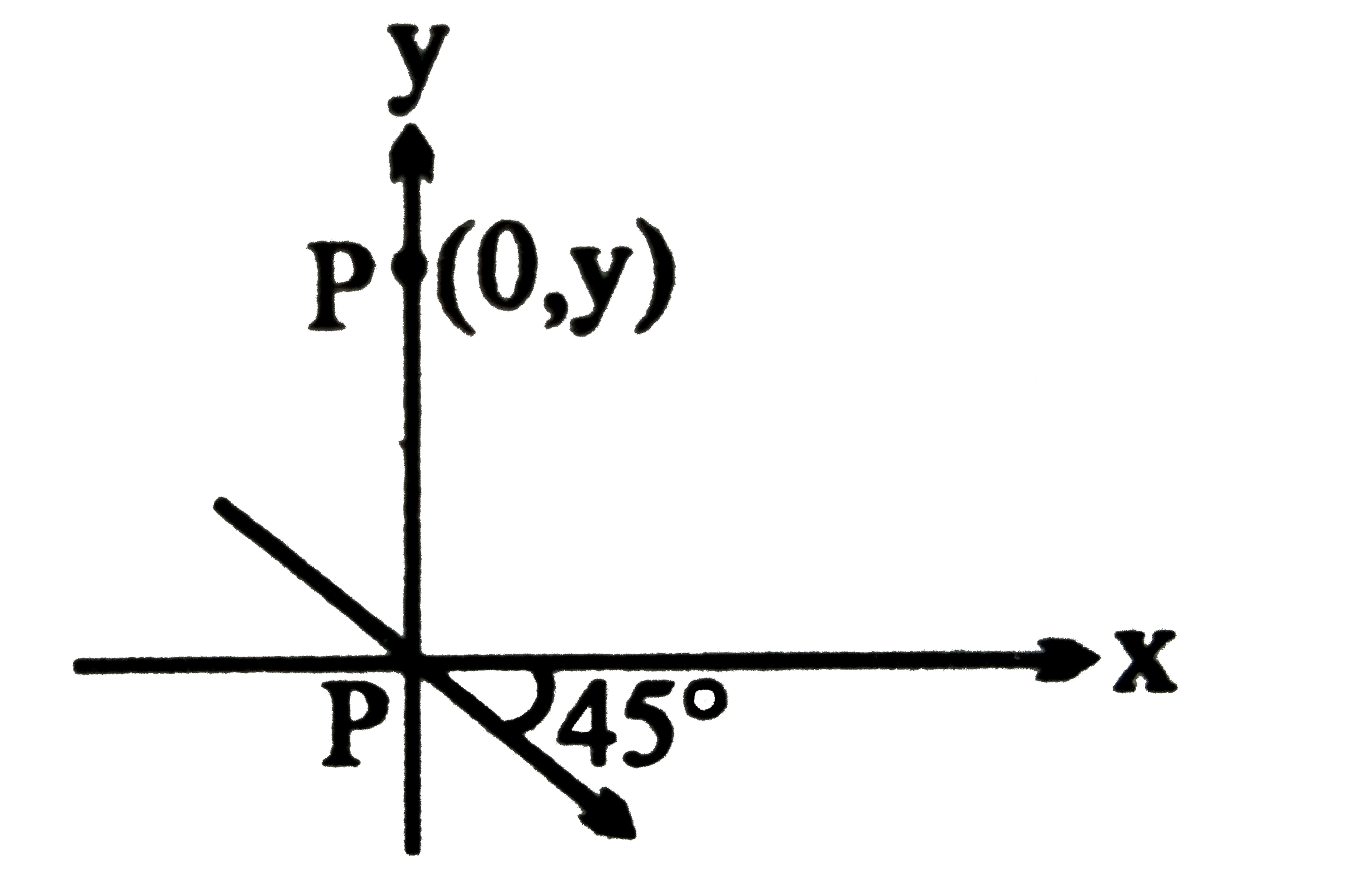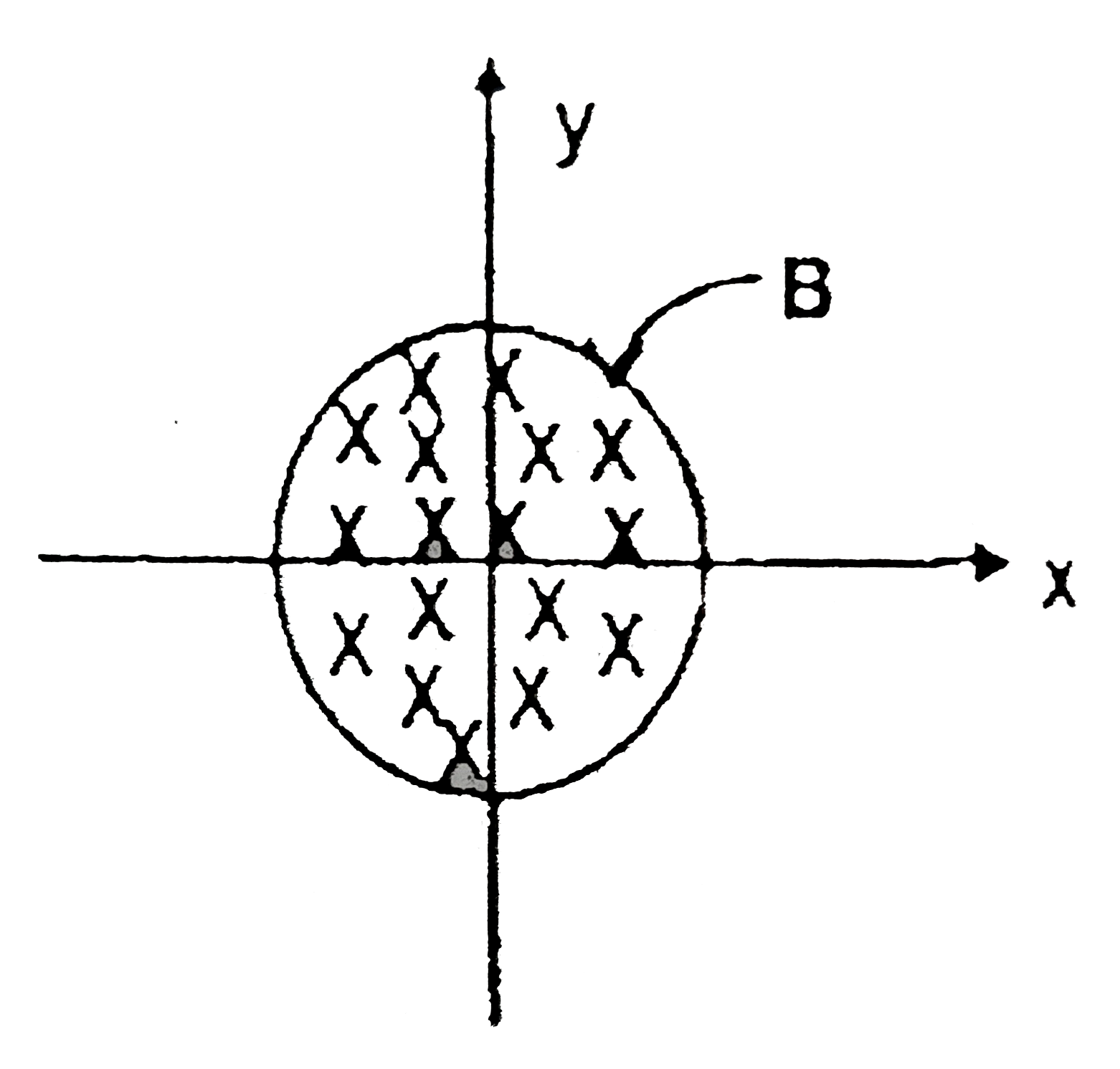An electric dipole coincides on Z-axis and its mid-point is on origin of the coordinates system. The electric field at an axial point at a distance z from origin is E(z) and electric field at an equatorial point at a distance y from origin is E(y). Here, z=y>>a, so ∣∣∣E(z)E(y)∣∣∣=... 1 4 3 2
1
4
3
2
The correct Answer is:D
To solve the problem, we need to find the ratio of the electric fields at an axial point and an equatorial point of an electric dipole.
1. Understanding the Electric Dipole:
An electric dipole consists of two equal and opposite charges, +Q and -Q, separated by a small distance '2a'. The dipole moment P is defined as P=Q⋅2a.
2. Electric Field at an Axial Point:
The electric field Ez at a point on the axial line (along the dipole moment) at a distance z from the origin is given by the formula:
Ez=2P4πϵ0z3
where ϵ0 is the permittivity of free space.
3. Electric Field at an Equatorial Point:
The electric field Ey at a point on the equatorial line (perpendicular to the dipole moment) at a distance y from the origin is given by the formula:
Ey=P4πϵ0y3
4. Given Condition:
We are given that z=y and both are much greater than a (i.e., z≫a and y≫a).
5. Finding the Ratio of Electric Fields:
To find the ratio ∣∣∣EzEy∣∣∣:
EzEy=2P4πϵ0z3P4πϵ0y3=2P4πϵ0z3⋅4πϵ0y3P
Simplifying this expression:
EzEy=2y3z3
6. Substituting z=y:
Since z=y:
EzEy=2y3y3=2
7. Final Result:
Therefore, the ratio ∣∣∣EzEy∣∣∣=2.
Conclusion:
The answer is 2.
An electric dipole consists of two equal and opposite charges, +Q and -Q, separated by a small distance '2a'. The dipole moment P is defined as P=Q⋅2a.
The electric field Ez at a point on the axial line (along the dipole moment) at a distance z from the origin is given by the formula:
Ez=2P4πϵ0z3
where ϵ0 is the permittivity of free space.
The electric field Ey at a point on the equatorial line (perpendicular to the dipole moment) at a distance y from the origin is given by the formula:
Ey=P4πϵ0y3
We are given that z=y and both are much greater than a (i.e., z≫a and y≫a).
To find the ratio ∣∣∣EzEy∣∣∣:
EzEy=2P4πϵ0z3P4πϵ0y3=2P4πϵ0z3⋅4πϵ0y3P
Simplifying this expression:
EzEy=2y3z3
Since z=y:
EzEy=2y3y3=2
Therefore, the ratio ∣∣∣EzEy∣∣∣=2.
The answer is 2.
Topper's Solved these Questions
- ELECTROSTATICSBOOK - DC PANDEY ENGLISHCHAPTER - ELECTROSTATICSEXERCISE - Assertion and Reason
15 Videos
- ELECTROSTATICSBOOK - DC PANDEY ENGLISHCHAPTER - ELECTROSTATICSEXERCISE - Match the columns
5 Videos
- ELECTROSTATICSBOOK - DC PANDEY ENGLISHCHAPTER - ELECTROSTATICSEXERCISE - Check point 1.5
20 Videos
- ELECTROSTATIC POTENTIAL AND CAPACITORSBOOK - DC PANDEY ENGLISHCHAPTER - ELECTROSTATIC POTENTIAL AND CAPACITORSEXERCISE - (C) Chapter exercises
50 Videos
- GRAVITATIONBOOK - DC PANDEY ENGLISHCHAPTER - GRAVITATIONEXERCISE - All Questions
135 Videos
Similar Questions
A point charge q is placed at the origin . How does the electric field due to the charge very with distance r from the origin ?
View SolutionA dipole is placed at origin of coordinate system as shown in figure, find the electric field at point P(0,y)
 .
.
View SolutionIf the intensity of electric field at a distance x from the centre in axial position of small electric dipole is equal to the intensity at a distance y in equatorial position, then
View SolutionThe electric potential at any point x,yandz in metres is given by V=3x2. The electric field at a point (2,0,1) is
View SolutionA loop is kept so that its center lies at the origin of the coordinate system. A magnetic field has the induction B pointing along Z axis as shown in the figure

View SolutionIf Ea be the electric field strength of a short dipole at a point on its axial line and Ee that on the equatorial line at the same distance, then
View SolutionIf Ea be the electric field strength of a short dipole at a point on its axial line and Ee that on the equatorial line at the same distance, then
View SolutionThe electric potential at a space point P (X, Y, Z) is given as V=x2+y2+z2. The modulus of the electric field at that point is proportional to
View SolutionThe electirc potential at a point (x,y,z) is given by
V=−x2y−xz3+4
The electric field →E at that point is
View SolutionThe electirc potential at a point (x,y,z) is given by
V=−x2y−xz3+4
The electric field →E at that point is
View Solution
